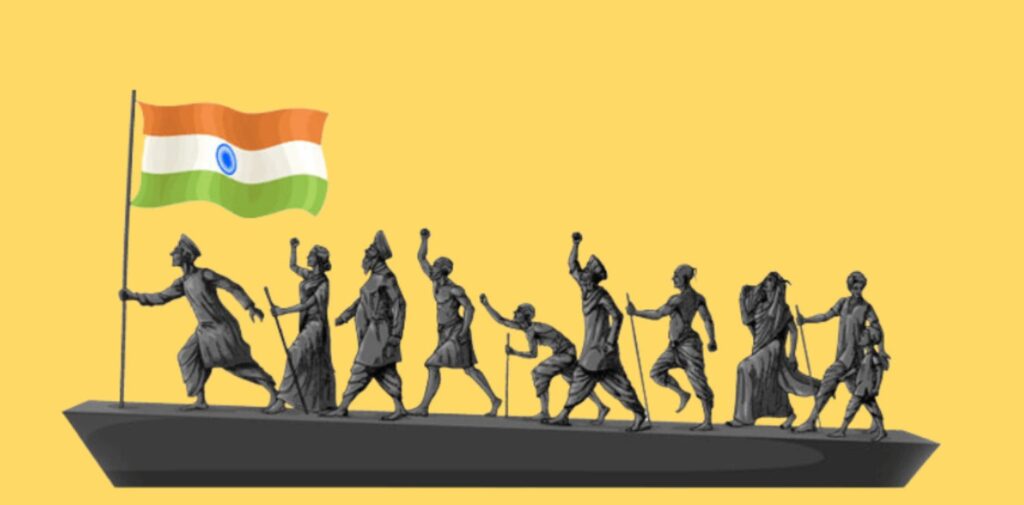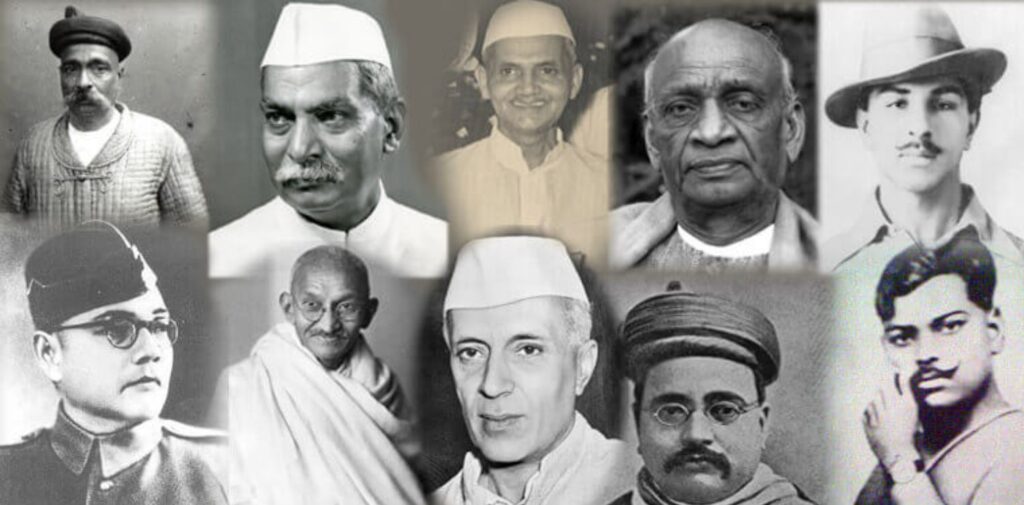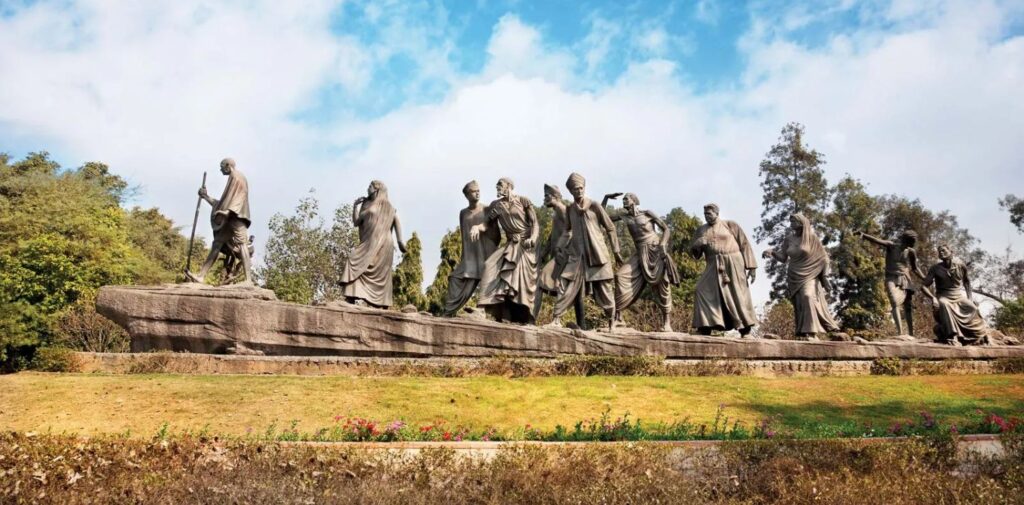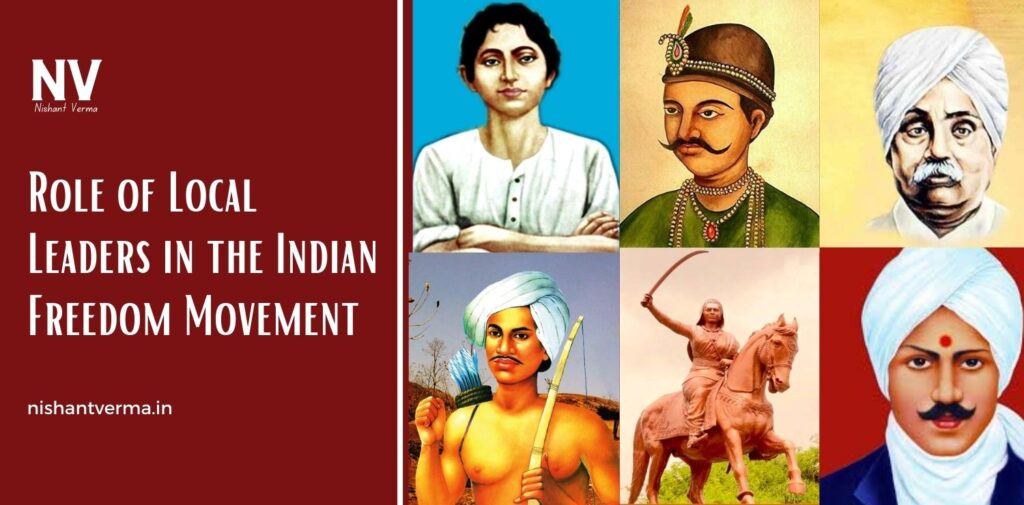India’s fight for freedom from British rule is often associated with national figures like Mahatma Gandhi, Jawaharlal Nehru, and Subhas Chandra Bose. However, the struggle for independence was not just the work of a few prominent leaders. Across the vast expanse of India, local leaders played a significant role in mobilizing people, organizing resistance, and fighting for India’s freedom. These leaders, often hailing from villages and small towns, understood the unique problems of their regions and were instrumental in connecting the broader independence movement with the everyday struggles of the people.
1. The Importance of Local Leaders in the Freedom Struggle
While national leaders inspired the masses, local leaders provided the backbone of the freedom movement by fighting on the ground. These leaders were close to the people, aware of their local issues, and capable of rallying them to take a stand against the British. They played various roles, including organizing protests, raising awareness about British exploitation, and leading local rebellions. The importance of local leaders can be understood by recognizing how they connected the larger movement with specific local needs, making the struggle for independence more relatable and impactful for the common man.

2. Local Leaders and Their Contributions
Throughout the country, from the northern plains to the southern coast, local leaders became the face of resistance in their respective areas. These leaders were often ordinary people who rose to prominence through their courage, leadership skills, and deep connection with the masses. Let’s take a look at some of the most influential local leaders who contributed significantly to India’s independence movement.
Lala Lajpat Rai
One of the key local leaders in the fight against British rule was Lala Lajpat Rai, known as the “Lion of Punjab.” He was not just a freedom fighter but also an advocate for social reforms in India. Lajpat Rai played a crucial role in organizing protests against the British, particularly in Punjab. His most famous act of defiance was during the Simon Commission protest in 1928. When the British police brutally attacked him during the protest, Lala Lajpat Rai succumbed to his injuries, but his martyrdom further inspired people to rise against British rule. His efforts helped lay the foundation for the struggle in Punjab, inspiring many others to join the independence movement.
Subramania Bharati
In southern India, Subramania Bharati was a renowned poet and a passionate freedom fighter. Bharati’s role in the Indian freedom movement was significant in Tamil Nadu, where he used his literary skills to inspire people to fight for independence. His poems and songs became symbols of rebellion. He also took part in several protests and advocated for the rights of the oppressed, including women and the lower castes. His writings encouraged a spirit of unity and resistance against British oppression, making him a beloved figure in the southern part of the country.
Tantia Tope
In the midst of the first large-scale revolt against British rule in 1857, Tantia Tope emerged as one of the most prominent leaders of the Indian soldiers and rebels. He was a commander during the Indian Rebellion of 1857, also known as the First War of Indian Independence. Tantia Tope played a crucial role in organizing resistance in regions like Gwalior and was instrumental in keeping the momentum of the rebellion alive even after the fall of Delhi. Despite the British crackdown, he continued to fight for India’s freedom until he was captured and executed in 1859. His bravery and leadership left a lasting mark on India’s struggle for freedom.
Rani Channamma
In the southern region of India, Rani Channamma of Kittur was one of the first women leaders to lead an armed rebellion against the British in 1824. Rani Channamma defied British policies that threatened her kingdom’s sovereignty, leading her forces against the British army. Although she was eventually captured and exiled, her resistance became a symbol of bravery, and her fight inspired future generations to stand up against colonial rule. Her legacy as a warrior queen continues to be honored in Karnataka and beyond.
Khudiram Bose
In the early 20th century, young freedom fighters like Khudiram Bose emerged in Bengal. Bose is remembered for his bold attempt to assassinate a British official in 1908, which led to his arrest and execution at the age of just 18. His courage and willingness to sacrifice his life for India’s freedom made him one of the youngest martyrs in the freedom movement. Khudiram Bose’s act of defiance symbolized the growing anger and frustration among the youth, inspiring countless others to join the revolution against British rule.
Birsa Munda
In the tribal regions of central India, Birsa Munda led one of the most significant local uprisings against British rule in the late 19th century. Birsa Munda’s movement, the Ulgulan, fought for tribal rights against British land policies and the exploitation of tribal resources. He advocated for the protection of tribal lands from outsiders and aimed to restore tribal rule in the region. Birsa Munda’s leadership transformed him into a hero in Jharkhand, where his contribution is remembered to this day. His role in the tribal resistance highlighted the importance of local leadership in standing up against British injustice.

3. The Role of Local Leaders in Various Regional Movements
While some local leaders took part in pan-Indian movements like the Non-Cooperation Movement and Civil Disobedience Movement, others focused on specific regional issues, addressing local grievances that were vital to the people in their areas. These local movements often became the foundation for larger national struggles.
The Champaran Satyagraha
Mahatma Gandhi’s first significant struggle in India was the Champaran Satyagraha in 1917, where he was joined by local leaders such as Raj Kumar Shukla. The Champaran region in Bihar was home to indigo farmers who were being exploited by British planters. Gandhi, along with local leaders, mobilized the peasants to demand fair treatment. This movement is often seen as the beginning of Gandhi’s leadership in India’s freedom struggle. While Gandhi was the national leader, it was the local leaders who helped organize the peasants and brought the issue to the forefront.
The Salt March and Local Participation
The Salt March of 1930 is another prime example of local leadership in action. While Gandhi led the iconic 240-mile march to Dandi, local leaders across the country organized small-scale protests and salt-making activities in their respective areas. In places like Chittagong, Satara, and Nagpur, local leaders mobilized their communities, defying the British salt laws and bringing national attention to the issue. This widespread participation showed that the freedom struggle was not just the work of a few; it was the collective effort of people from all walks of life, organized and led by local leaders.

4. The Legacy of Local Leaders in India’s Freedom Struggle
Local leaders left behind a rich legacy that continues to inspire people even today. They were the ones who fought battles in their villages, towns, and regions, keeping the spirit of independence alive even when national movements were far from their reach. Their ability to connect with the people on a personal level and understand their specific struggles made them crucial to the larger fight against British rule.
After independence, the contributions of many local leaders were often overshadowed by the names of national figures. However, the recognition of these local heroes is slowly increasing in modern times as historians and researchers uncover their vital roles in the freedom movement.
Conclusion
The role of local leaders in India’s freedom movement is invaluable. These leaders were not merely followers of national leaders; they were the driving force behind the local resistance movements that kept the flame of freedom burning in every corner of the country. From organizing protests and uprisings to mobilizing people in their villages and towns, these leaders connected the larger independence struggle with the lives of ordinary Indians. Today, we must remember their contributions and ensure that their stories are told alongside those of the more prominent national leaders. It is their courage, determination, and commitment that helped shape India into the free and independent nation it is today.




